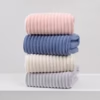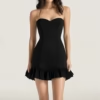Breaking into the retail market is a significant milestone for any brand, offering opportunities for expanded reach, increased sales, and enhanced brand recognition. However, securing a spot on retail shelves is no easy feat. It requires careful planning, strategic thinking, and a compelling pitch. Here are eight tips to help you successfully get your brand into retail stores.
1. Understand Your Target Retailers
Before approaching potential retail partners, it’s crucial to understand their needs, values, and customer base. Conduct thorough research to identify retailers whose missions align with your brand.
- Market Fit: Ensure your products complement the retailer’s existing inventory. Study their bestsellers and customer reviews to gauge their preferences.
- Store Aesthetics: Visit their stores or browse their websites to understand their visual merchandising and store layouts. Your products should seamlessly integrate into their retail environment.
Example: If your brand focuses on sustainable and eco-friendly products, target retailers known for their commitment to sustainability and ethical sourcing.
2. Develop a Strong Brand Story
Retail buyers are not just purchasing products; they’re buying into a brand’s story. Craft a compelling narrative that highlights your brand’s journey, values, and unique selling propositions (USPs).
- Authenticity: Be genuine and transparent. Share your brand’s origin, mission, and the inspiration behind your products.
- Differentiation: Emphasize what sets your brand apart from competitors. Highlight unique features, materials, production processes, or social initiatives.
Example: “Our brand, EcoWear, was born out of a desire to create beautiful, sustainable fashion. Each piece is handcrafted from organic materials, contributing to a healthier planet and a more sustainable future.”
3. Create a Professional Line Sheet
A well-organized line sheet is a vital tool for presenting your products to retail buyers. It should be clear, concise, and visually appealing.
- High-Quality Images: Include professional photos of each product from multiple angles.
- Detailed Descriptions: Provide essential information such as materials, sizes, colors, and unique features.
- Pricing and Terms: Clearly state wholesale prices, suggested retail prices (SRPs), and minimum order quantities (MOQs).
- Order Form: Include a straightforward order form to make the purchasing process easy for buyers.
4. Prepare a Compelling Pitch
Your pitch should resonate with retail buyers and convey why your products are a perfect fit for their store. Here’s what to include:
- Introduction: Briefly introduce yourself and your brand.
- Product Highlights: Showcase key features and benefits of your products.
- Market Fit: Explain how your products will meet their customers’ needs and complement their existing inventory.
- Support: Offer to provide samples, promotional materials, and marketing support to help drive sales.
Example: “Hi [Retailer Name], I’m [Your Name], founder of EcoWear. Our sustainable fashion line, made from 100% organic materials, aligns perfectly with your store’s commitment to eco-friendly products. I believe our collection will resonate with your customers and enhance your sustainability offerings.”
5. Build Relationships
Strong relationships with retail buyers can pave the way for successful partnerships. Focus on building trust and demonstrating your commitment to mutual success.
- Networking: Attend industry events, trade shows, and exhibitions to meet potential buyers in person.
- Follow-Up: After initial contact, follow up with personalized emails or phone calls to nurture the relationship.
- Consistency: Be reliable and consistent in your communication and order fulfillment. Trust is built over time through dependable interactions.
6. Leverage Social Proof
Retail buyers are more likely to consider your brand if they see evidence of customer satisfaction and market demand. Utilize social proof to strengthen your pitch.
- Testimonials: Collect and showcase positive reviews from satisfied customers.
- Case Studies: Share success stories of other retailers who have benefited from carrying your products.
- Media Coverage: Highlight any press mentions, awards, or recognitions your brand has received.
Example: “Our products have received rave reviews from customers and have been featured in prominent publications like Vogue and Elle. Retailers like [Retailer Name] have seen a significant uptick in sales since adding our collection.”
7. Stay Organized and Prepared
Efficiency and organization are key to managing wholesale relationships. Ensure you are well-prepared to meet the demands of retail partnerships.
- Inventory Management: Keep track of your inventory to avoid stockouts or overstocking.
- Order Fulfillment: Streamline your fulfillment process to ensure timely delivery.
- Record Keeping: Maintain clear records of orders, invoices, and communications.
8. Promote Your Brand
Invest in marketing efforts to raise brand awareness and drive demand, making your brand more attractive to retailers.
- Website: Create a visually appealing, user-friendly website with a dedicated wholesale section.
- Social Media: Utilize platforms like Instagram, Facebook, and Pinterest to showcase your products and engage with your audience.
- Email Marketing: Send targeted campaigns to retailers, informing them about new products, promotions, and industry insights.
Expand Your Reach with Stylebuy
Ready to take your brand to the next level? Sign up on Stylebuy.net to connect with a network of retailers eager to discover innovative products like yours. With Stylebuy, you’ll benefit from:
- Enhanced visibility in the retail market.
- Streamlined wholesale processes and support.
- Access to a community of like-minded entrepreneurs.
Join Stylebuy today and take the first step towards expanding your brand’s presence in retail stores.
Related



















































